Do you know what emotional intelligence is? How is it measured? How can it be developed? We explain it in this post and offer you activities to develop emotional intelligence.
Introduction
Emotional intelligence is a fundamental concept in psychology that is becoming increasingly prominent. It is considered a source of happiness and health, as it is closely linked to the intelligent coping of various everyday situations. In addition, it is essential to train it in cases of stress, anxiety and other mental disorders.
Emotions incredibly influence the decisions we make in our lives, even on seemingly rational matters. In fact, it is estimated that 95% of all our decisions are influenced by our emotions (Arrabal Martín, 2018).
At first glance it may seem that these decisions are not the most accurate; however, it has been shown that there are people with high emotional intelligence who can decide better than others with a high intelligence quotient. Many cases can be observed of successful individuals in whom emotional intelligence is far superior to intellectual intelligence.
Ultimately, learning emotional intelligence is essential to lead a satisfying and healthy life and to establish appropriate relationships with those around you.
How did the concept of emotional intelligence arise?
This concept is relatively new, beginning with Gardner’s theory of multiple intelligences. This author was the first to reformulate the concept of intelligence, breaking with previously established frameworks. Thus, Gardner argued that human beings presented seven types of intelligence, each practically independent of the others. Among those types, he described intrapersonal and interpersonal intelligences, aspects that had not previously been taken into account when defining intelligence.
However, the definition of emotional intelligence as such was developed by Salovey and Mayer in 1990, based on what Gardner proposed.
Daniel Goleman’s emotional intelligence
Despite everything, the one who popularized the concept was Daniel Goleman, through his work Emotional Intelligence, one of the best-selling books today.
Goleman is considered the most prominent psychologist in the revolutionary concept of emotional intelligence. His ideas arouse increasing interest in different fields, as he claims that a successful life can be achieved through emotional intelligence without giving priority to the “traditional” intelligence quotient (IQ). Moreover, he considers that this type of intelligence is the most powerful tool we possess when making any decision in our lives, even surpassing IQ.
Later, Daniel Goleman expanded the concept, focusing on the application of emotional intelligence to work and leadership.
On the other hand, it is necessary to highlight that, despite being a subject researched and developed mainly by cognitive psychology, there are works that reflect the biological basis of emotional intelligence. For example, LeDoux’s studies, which show that the amygdala connects the so-called “rational brain” and the “emotional” one. This allows us to shape our emotions according to the context and environmental demands.
Definition
The definition of emotional intelligence arose from the need to answer the question of why there are people who adapt better than others to the different situations of daily life. The secret of success seems to lie in developed emotional intelligence, which can be defined as the ability to perceive, understand and manage emotional information about oneself and others.
Specifically, the definition that Daniel Goleman offers us of emotional intelligence is: “the capacity to recognize, accept and channel our emotions to direct our behaviors toward desired goals, achieve them and share them with others”.
What do we call emotional intelligence?
A developed emotional intelligence allows us to distinguish our own emotions, accept them and guide them in the most appropriate way to be successful in our life. This facilitates achieving our goals and establishing a better relationship with ourselves and with others.
As you may have noticed, this type of intelligence is composed of several fundamental types of competencies:
- Knowledge of one’s own emotions, known as emotional self-knowledge,
- the appropriate control of these (emotional self-regulation),
- the ability to motivate oneself,
- the recognition of others’ emotions (empathy),
- the establishment of positive personal relationships (social skills).
Thus, a person with high emotional intelligence would present these competencies and use them as a tool to achieve success in various areas of their life.
Examples
- Being able to actively listen to others without interrupting and attending to their nonverbal language.
- noticing one’s own emotions and how they are faced (or if they are avoided).
- acting appropriately in response to others’ emotional reactions, such as crying or an outburst of anger.
- controlling emotions in a situation where expressing them would be socially inappropriate or counterproductive.
- looking for conflict solutions in which “everyone wins”.
How to measure emotional intelligence?
Professionals must measure emotional intelligence with tests that meet psychometric standards. There are three types of tests that evaluate it:
- Self-report tests: these are completed by the subjects themselves, who must answer to what extent they agree or disagree with the statements described. An example would be the SREIT (Self-Report Emotional Intelligence Test) by Nicola Schutte.
- Reports from others: this is carried out with groups of people who interact frequently with each other (for example, coworkers). Each person must assess the level of emotional intelligence of each member of the group (360-degree assessment). It can represent a somewhat subjective and biased view since people tend to include personality characteristics, mistakenly considering them traits of emotional intelligence.
- Ability tests: such as the MEIS (Multifactor Emotional Intelligence Scale), or its improved version MSCEIT (Mayer-Salovey-Caruso Test on Emotional Intelligence). It constitutes a more reliable measure based on emotional intelligence abilities.
How to develop emotional intelligence?
Emotional intelligence can be achieved through emotional education. This learning process aims to acquire “the set of knowledge, capacities, skills and attitudes necessary to understand, express and appropriately regulate emotional phenomena” (Bisquerra and Pérez, 2007).
To develop it, first of all, it is essential to work on our ability to perceive, describe and express our affective states and those of others. Identifying how we feel helps to channel our thoughts and behaviors in order to motivate ourselves, set goals and achieve accomplishments in life.
Many times we are not able to define how we feel, or we label our emotions very basically (I am “fine” or “bad”) when you can be more precise with some effort (I feel surprised, disappointed, liberated, etc.). The objectives at this point should be: recognizing when you are feeling an emotion and knowing what that feeling means. Also, understanding your emotions, distinguishing them and understanding how they evolve.
The next level would be emotional regulation, setting the goal of properly controlling both positive and negative emotions.
Subsequently, you can begin to work on identifying emotions in others. This is very important for creating positive social relationships.
Next, you should enhance the ability to understand others, that is, empathy. For this it is essential not only to pay attention to what the other person says, but to observe their nonverbal expressions to integrate all the information.
On the other hand, you would also train the ability to regulate emotions in others. This is achieved mainly through emotional communication and active listening. By working on all these aspects you will gradually increase emotional intelligence.
Activities to develop emotional intelligence
Below are suggested activities to develop emotional intelligence so you can start learning today.
Pay attention to your emotions
In this activity you should write in detail the emotions you felt in recent days just before going to bed. Thus, you can start with yesterday and try to go back as far as possible. Also, try to associate those emotions with what happened to you during the day. Try not to confuse your emotional states (sad) with physical states (tired).
Another variant to become aware of past emotions is to describe how you felt in three important events from your childhood. Try to describe both positive and negative events. You can also do it with emotions from the recent past (last three years, for example).
Name your emotions
Writing about your emotions and reflecting on where they come from and what consequences they have produces greater knowledge of our emotional intelligence.
Set a time each day to stop and write what you are feeling at that moment. You can set an alarm so you don’t forget and turn it into a habit. Try to reflect and include all the information you can. For this, Robert Plutchik’s emotion wheel can be very useful.
A variant of the exercise is to select a poem and analyze what emotions it produced in you when you read it. It is not about describing what the author intended to express, but what it made you feel. Choose about six words to describe how you felt, including physical sensations. You can do the same with images, movies or videos.
Regulate your emotions
To be more aware of how you regulate your emotions you can write what you do and what you think when you find yourself in a specific affective state. For example, you can start by analyzing how you react to fear, then to sadness and later to anger. To make the task easier, imagine and visualize yourself in that situation and pay attention to what you think, what you do and whether you try to avoid your feelings or not.
You can do the same exercise, but describing your reaction to a pleasant situation, for example, a positive comment someone has made to you.
Identify emotions in others
The most common activity to work on this aspect of emotional intelligence is to observe photographs or videos of different facial expressions and describe in detail the emotions they express. Are they positive, negative or expressionless? How is the position of the mouth or the eyebrows? Do they reflect approach or avoidance? Take the context into account!
Listen actively
This activity is carried out in a group, with a moderator. The idea is to choose a topic to discuss, and it is recommended to start with simpler and easier ones and later continue with more complex ones. Each person must give their opinion on the topic, and it is essential that before speaking they summarize what the last person who spoke said.
The mirror
The mirror is the last of the activities to develop emotional intelligence that we propose today. The exercise should be done in pairs. One of the two must speak honestly and naturally about an important situation in their life. The other person must listen actively and attend to the partner’s nonverbal language, since they will later have to “imitate” them as faithfully as possible. They should try to reproduce the tone of voice, the gestures, the pauses, etc.
Emotional intelligence in children
Emotional intelligence is not only for adults; in fact, it is recommended to begin emotional education from the earliest school stages. It would be ideal for all schools to have an emotional education program in which teachers, family members and students participate.
In any case, the environment where it must not be missing is the home. Parents should encourage models of emotionally intelligent behavior; for this it is essential that they previously develop their own emotional intelligence.
It has been shown that helping children develop their emotional competencies at early stages produces significant differences in their long-term health and satisfaction. In addition, emotional intelligence helps prevent addictions, lack of self-esteem, violence, impulsivity, delinquency, etc., while promoting academic and professional development and reducing the onset of stress and depression.
References for the article on activities to develop emotional intelligence
- Arrabal Martín, E. M. (2018). Emotional Intelligence. Editorial Elearning, SL.
- Bisquerra Alzina, R., & Pérez Escoda, N. (2007). Emotional competencies. Educación XXI: revista de la Facultad de Educación (10), 61-82.
- Fernández Berrocal, P. y Ramos Díaz N. (2016). Develop Your Emotional Intelligence. Barcelona: Editorial Kairós.
- Gallego Matellán, M. (2015). Emotional education with and without ADHD. Madrid: EOS.
- García Navarro, E., López-Cassà, E., Pérez-González, J. C., Lantieri, I., Nambiar, M., Aguilera, P., … & Planells, O. (2012). How to educate emotions? Emotional intelligence in childhood and adolescence. Esplugues de Llobregat (Barcelona) Hospital Sant Joan de Déu.
- Grewal, D., & Salovey, P. (2006). Emotional intelligence. Mente y cerebro, 16(1), 10-20.
- Trujillo Flores, M. M., & Rivas Tovar, L. A. (2005). Origins, evolution and models of emotional intelligence. Innovar, 15(25), 9-24.
If you liked this article about activities to develop emotional intelligence, you might also be interested in:
“This article has been translated. Link to the original article in Spanish:”
Actividades para desarrollar la inteligencia emocional


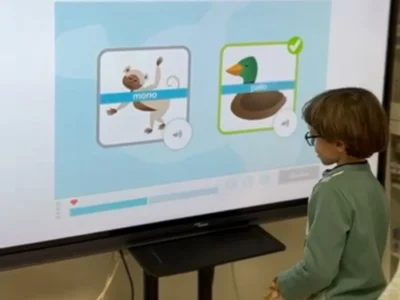
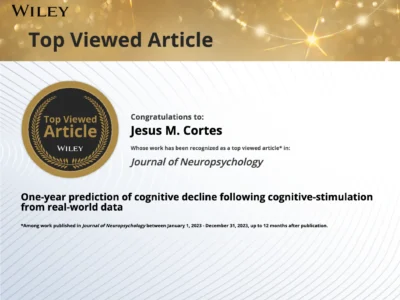
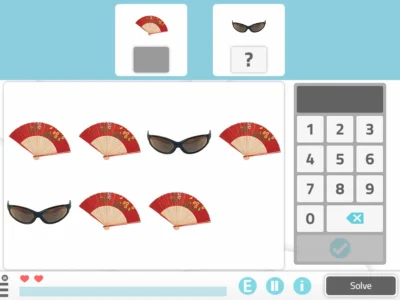
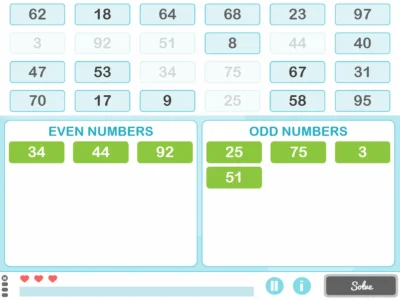
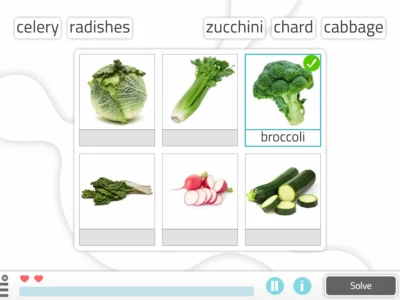
 Decision Making from a Psychological Perspective
Decision Making from a Psychological Perspective
Leave a Reply